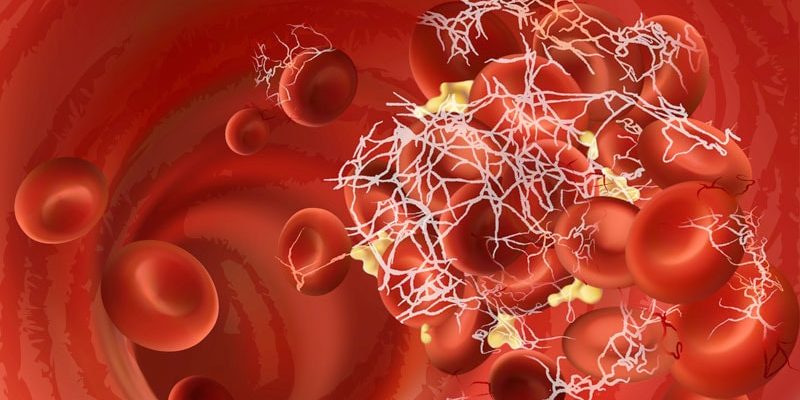TOPLINE:
A strategy that involves stratifying patients by thrombosis risk significantly reduced thromboembolism and death among high-risk outpatients starting treatment for lung and GI cancers.
METHODOLOGY:
Despite strong evidence supporting thromboprophylaxis, employing this strategy in patients on anticancer therapies in the outpatient setting remains a major challenge largely because of the variation among patients’ risk for clots and bleeding.
The open-label, randomized TARGET-TP trial evaluated the safety and efficacy of targeted thromboprophylaxis before and during anticancer therapy for lung and GI cancers.
Patients were stratified into high and low thromboembolism risk groups based on their D-dimer and fibrinogen levels.
The 200 high-risk patients were randomized (1:1) to the anticoagulant enoxaparin — 40 mg subcutaneously daily for 90 days, extended to 180 days based on patients’ ongoing risk — or no thromboprophylaxis (control); an additional 128 low-risk patients were observed (no randomization or thromboprophylaxis).
The primary outcome was thromboembolism at 180 days. Key secondary outcomes included bleeding, survival, and risk model validation.
TAKEAWAY:
In the high-risk cohort, the incidence of thrombotic events was significantly reduced among patients receiving enoxaparin (8% vs 23%; hazard ratio [HR], 0.31; P = .005), representing an absolute risk reduction of 15% and relative risk reduction of 65%. The number needed to treat to prevent a thrombotic event in this high-risk group was 6.7. The thrombosis rate among low-risk patients was 8%.
In the high-risk group, 6-month mortality was 13% in the enoxaparin group vs 26% in the control group (HR, 0.48; P = .03) and 7% in the low-risk group compared with the high-risk control (HR, 4.71; P < .001).
The sensitivity and specificity of this risk-directed approach were 70% and 61%, respectively.
Major bleeding rates were low and not significantly different between groups — 2% of all patients, 1% in the high-risk enoxaparin group, 2% in the high-risk control group, and 2% in the low-risk group.
IN PRACTICE:
“The fibrinogen and D-dimer risk assessment model identified individuals with lung and GI cancers who would most benefit from thromboprophylaxis and those who could avoid intervention,” the study authors concluded.
Given these findings, which support the use of thromboprophylaxis in this patient population, “what is urgently needed is implementation science: systematically closing the gap between what we know and what we do,” the author of an accompanying editorial explained.
SOURCE:
The study, led by Marliese Alexander, PhD, from Peter MacCallum Cancer Centre, Melbourne, Australia, was published online September 21 in JAMA Oncology, along with the editorial by Alok Khorana, MD, from Cleveland Clinic Taussig Cancer Institute.
LIMITATIONS:
The open-label design is inferior to a double-blind, placebo-controlled design, but there was minimal risk of bias for the key primary outcomes. Validation of the risk assessment model is limited to lung and GI cancers so far.
DISCLOSURES:
The study was supported by the Peter MacCallum Cancer Foundation, Victorian Cancer Agency, and the Australian National Health and Medical Research Council. Several authors reported relationships with various pharmaceutical companies.
For more from Medscape Oncology, join us on X(formerly known as Twitter) and Facebook.
Source: Read Full Article
